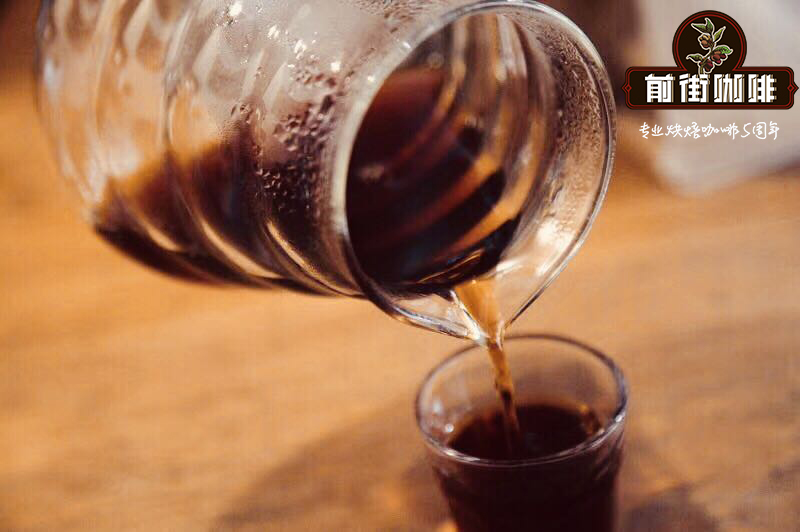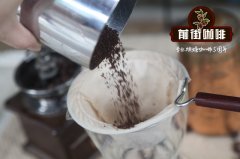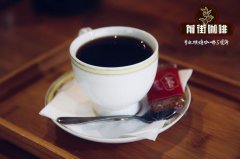El Salvador San Leticia Pacamara honey treatment, cooking sharing _ hand Pacamara honey treatment

Professional coffee knowledge exchange More coffee bean information Please pay attention to coffee workshop (Weixin Official Accounts cafe_style)
El Salvador Coffee Region-Santa Ana Volcano
El Salvador is a small country, but don't underestimate its coffee productivity. In its heyday, El Salvador used to be the fourth largest coffee producer in the world, but after decades of civil war, the coffee industry almost collapsed. Fortunately, the war stopped in recent years and the coffee industry recovered its vitality. The only benefit of the civil war for El Salvador was that farmers left their fields barren and could not catch up with the most popular Catimo train of cultivation in the past two decades, thus preserving the ancient bourbon and tibeka varieties. In other words, El Salvador still cultivated in the most traditional shade method, which had a positive effect on the aroma of coffee. In 2005, the Salvadoran hybrid Pacamara swaggered at the coe, leaving many international cup testers confused and wondering how to grade it. Unexpectedly, this hybrid bean not only broke the boundaries of coffee, but also expanded the visibility of Salvadoran coffee.
Santa Leticia Manor Pacamara
This bean comes from El Salvador's San Leticia estate, near the town of Apaneca in Ahuachapan province, managed by third-generation farmer Ricardo Valdivieso and his family. In 1870 Ricardo Valdivieso's grandfather bought the land and named it after his wife, Leticia.
Pakamala
Pakamara is a coffee bean variety that has sprung up in recent decades. This variety originated from Salvador and is a hybrid variety of Pakas and elephant beans. Pakamara is another coffee variety that sweeps COE in a large range after Rose Summer, and once became a strong rival of Rose Summer coffee. However, Pakamara is far more "friendly" than Guixia in terms of price. From the perspective of flavor, the author personally prefers Pakamara with higher balance.
El Salvador, where Pacamara originated, has always had excellent coffee estates. Santa Letcia is located in the volcanic region of Apaneca in the west of Salvador, with an average altitude of 1400 meters. The Pakamala produced here is honey treated, fruity, but the sour and bitter balance is extremely high, the taste is soft and long, thick and sweet.
How to make Salvadoran coffee?
Front Street Coffee Hand Brewing Reference: Weigh 15g of [Santa Leticia Pacama honey treatment] coffee powder, pour it into the grinder and grind it moderately. The ground particles are slightly coarser than salt. We use BG grinder scale 5R (standard sieve pass rate 60%), water temperature 89 ℃, V60 filter cup extraction.
The hot water in the hand-made pot draws a circle clockwise with the center of the filter cup as the center. The timing starts when brewing. The coffee is brewed to 30g in 15 seconds. Then stop filling water. When the time reaches 1 minute, the second water injection. When injecting water for the second time, as before, draw a circle clockwise around the center of the filter cup, and the water flow should not rush to the place where the coffee powder is connected with the filter paper, so as to avoid channel effect.
Coffee powder to the outermost circle to leave a circle, and then a circle to the middle brewing, 2 minutes and 20 seconds, coffee to 220g, brewing coffee is complete.
| Japanese ice hand wash [Santa Leticia Pakamala honey processing]
Front Street Coffee Ice Hand Chong [Santa Leticia Pakamala Honey Treatment] Reference:
Salvadoran Coffee [Santa Leticia Pacama honey treatment], medium roast, BG grinder scale 5M (standard sieve pass rate 67%)
20 grams of powder, 150 grams of ice, 150 grams of hot water. The water temperature is 90℃ higher than the recommended normal hand flushing, and then 1℃ higher. The normal grinding small Fuji 3.5 scale, ice hand flushing is slightly smaller than half a grid-small Fuji 3 scale.
Steaming water 40 grams, steaming time 30 seconds.
Water injection in stages, 60 grams of water in the first stage and 40 grams of water in the second stage. Use a relatively fine but high water injection column, stir the impact vigorously, so that the coffee powder fully tumbling, but be careful that the liquid level is not too high, do not rush to the edge of the filter paper.
The whole extraction time is also about 2 minutes and a half (with the normal extraction time of 20 grams of powder close).
END
Important Notice :
前街咖啡 FrontStreet Coffee has moved to new addredd:
FrontStreet Coffee Address: 315,Donghua East Road,GuangZhou
Tel:020 38364473
- Prev

El Salvador Beautiful Manor Red Bopin hand dripping coffee how to make _ Red Bobby hand brew good drink
Professional coffee knowledge exchange more coffee bean information please follow Coffee Workshop (Wechat official account cafe_style) Salvadoran Coffee Manor-Miramar Manor La Campanula estate, in fact, it is an ultra-high altitude manor in the country! More than 1650 meters above sea level, the manor's exclusive competition batch is planted in 1750 Michael's environment, which is the CoE winning batch, the Lima family, in 1990.
- Next

Met Kenya in El Salvador! SL28 handmade parameters sharing of El Salvador Olive Manor
Professional coffee knowledge exchange more coffee bean information please follow the coffee workshop (Wechat official account cafe_style) Salvadoran Coffee Manor-Olive Tree Manor (KENYA SL28) Olive Tree Manor began to grow coffee in 1930, located in the Santa Ana volcanic area of El Salvador Olive Tree Manor surrounds El Salvador's very famous LOS VOLCANES (volcano)
Related
- Detailed explanation of Jadeite planting Land in Panamanian Jadeite Manor introduction to the grading system of Jadeite competitive bidding, Red bid, Green bid and Rose Summer
- Story of Coffee planting in Brenka region of Costa Rica Stonehenge Manor anaerobic heavy honey treatment of flavor mouth
- What's on the barrel of Blue Mountain Coffee beans?
- Can American coffee also pull flowers? How to use hot American style to pull out a good-looking pattern?
- Can you make a cold extract with coffee beans? What is the right proportion for cold-extracted coffee formula?
- Indonesian PWN Gold Mandrine Coffee Origin Features Flavor How to Chong? Mandolin coffee is American.
- A brief introduction to the flavor characteristics of Brazilian yellow bourbon coffee beans
- What is the effect of different water quality on the flavor of cold-extracted coffee? What kind of water is best for brewing coffee?
- Why do you think of Rose Summer whenever you mention Panamanian coffee?
- Introduction to the characteristics of authentic blue mountain coffee bean producing areas? What is the CIB Coffee Authority in Jamaica?

